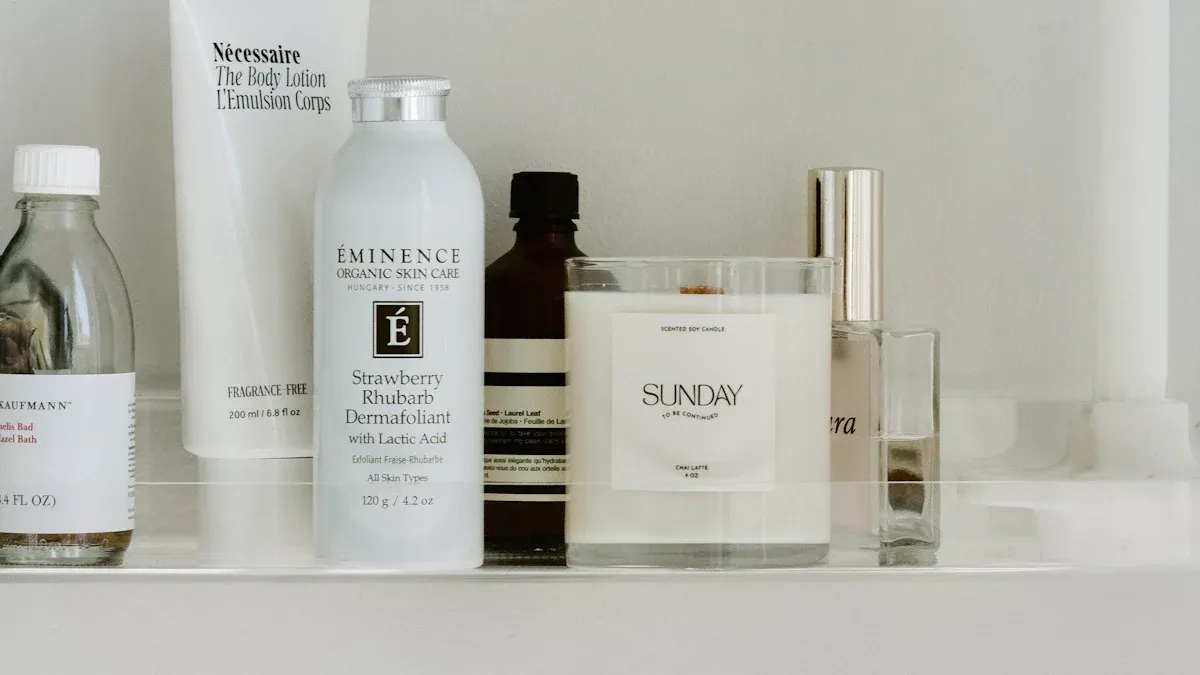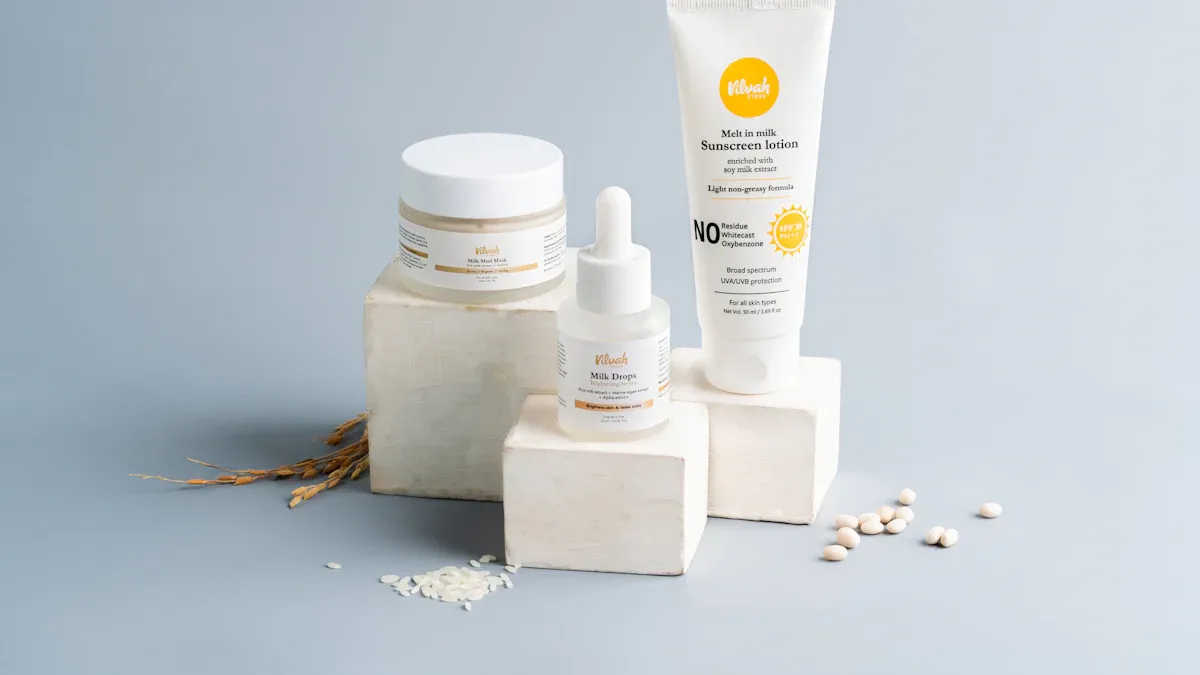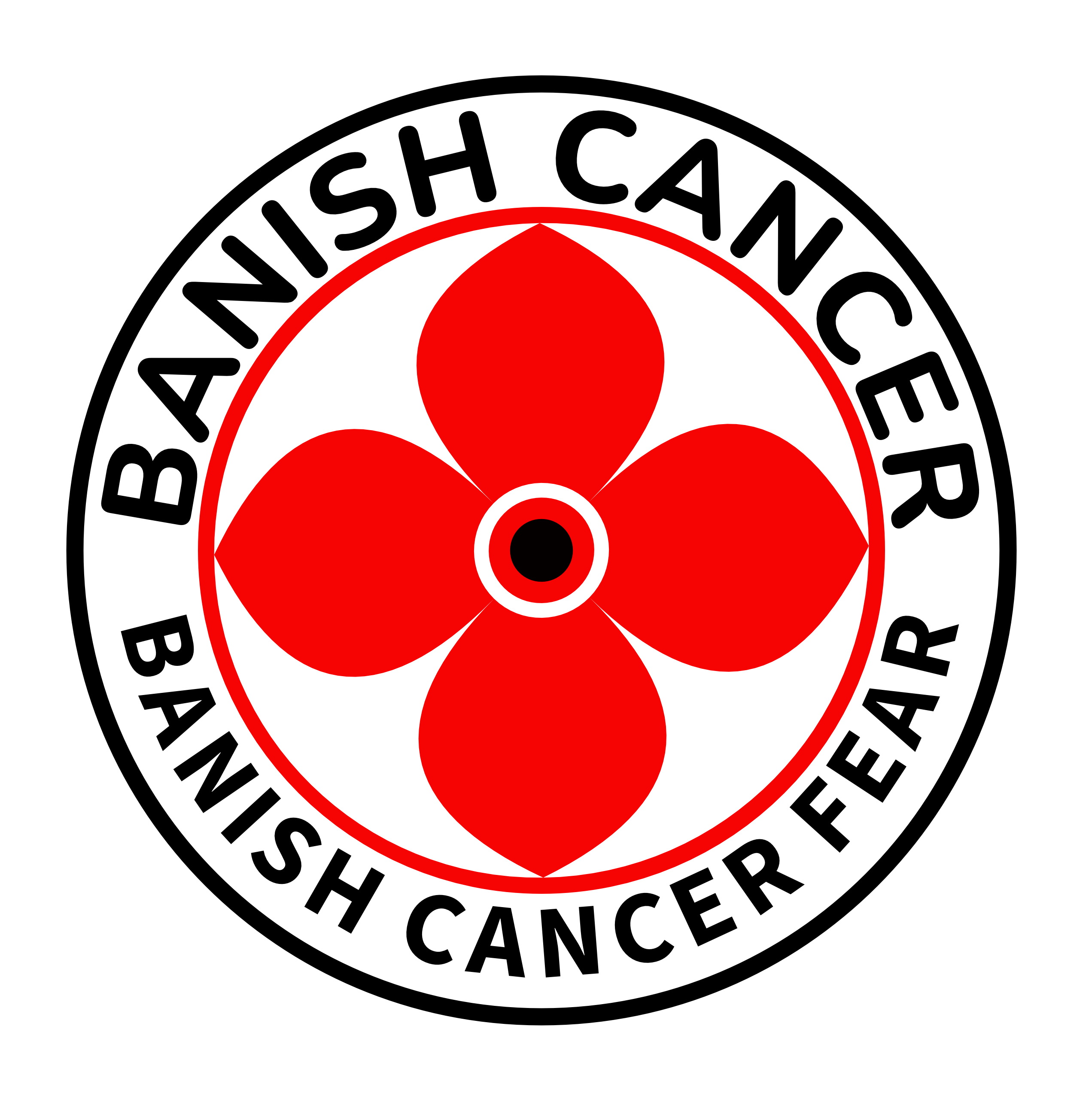How to Spot Harmful Ingredients in Personal Care Products

Understanding what goes into your personal care products is essential for protecting your health. Many products on the market contain harmful chemicals that can pose serious risks. For example, since 2009, over 73,000 products have been reported to include 88 chemicals linked to cancer or reproductive harm. The average consumer in the U.S. encounters more than 100 chemicals daily, including endocrine disruptors like phthalates and parabens. By choosing clean beauty: choosing non-toxic personal care products, you can reduce exposure to these risks and make safer choices for yourself and your family.
Key Takeaways
Check labels closely. Watch for long names or unclear words like 'fragrance' that may mean harmful ingredients.
Pay attention to the first few ingredients. They are listed by amount, so skip products with bad stuff at the top.
Pick items with trusted seals. Look for labels like USDA Organic or EWG Verified to know they are safe and honest.
Use apps and websites to learn more. Tools like Think Dirty and EWG’s Skin Deep help you check if products are safe.
Choose clean beauty brands. Buy items without harmful chemicals and that follow good, ethical practices for better health.
How to Identify Harmful Ingredients

Tips for Reading Labels
Look for long, complex chemical names
When reading product labels, pay attention to long, complicated chemical names. These often indicate synthetic or potentially harmful ingredients. For example, substances like "methylisothiazolinone" or "polyethylene glycol" may raise concerns due to their links to skin irritation or other health risks. If you encounter unfamiliar terms, take a moment to research them. This small step can help you avoid products with questionable components.
Beware of vague terms like "fragrance" or "parfum"
Labels that list "fragrance" or "parfum" without further explanation can be misleading. These terms often hide a mix of chemicals, including phthalates, which are associated with reproductive health issues. The Environmental Working Group (EWG) highlights that many companies fail to disclose the full composition of fragrances. To stay safe, look for products labeled as "fragrance-free" or those that specify natural essential oils as their scent source.
Understanding Ingredient Lists
Ingredients are listed in descending order of concentration
The order of ingredients on a label matters. The FDA requires that ingredients be listed by weight, starting with the most abundant. This means the first few ingredients make up the majority of the product. If you see harmful additives like parabens or sulfates near the top, it’s best to avoid that product. Focusing on the first three ingredients can give you a quick idea of the product's overall composition.
Research unfamiliar terms using reliable sources
If you come across an ingredient you don’t recognize, use trusted resources to learn more. Tools like EWG’s Skin Deep database provide detailed information about the safety of cosmetic ingredients. This database educates consumers about potential hazards and is updated regularly with new scientific findings. By staying informed, you can make better choices and reduce exposure to harmful chemicals.
Common Red Flags to Watch For
Products with excessive synthetic additives
Products loaded with synthetic additives like artificial colors, preservatives, or fragrances often pose health risks. These ingredients may cause skin irritation or have unknown long-term effects. Be cautious of labels that list multiple artificial components, especially if they appear early in the ingredient list.
Labels that lack transparency or certifications
A lack of transparency is a major red flag. Avoid products that do not clearly disclose their ingredients or use vague marketing claims like "natural" without certifications. Look for trusted labels such as USDA Organic or cruelty-free certifications to ensure the product meets safety and ethical standards. Transparency in labeling helps you make informed decisions and avoid unnecessary risks.
Harmful Ingredients to Avoid

Parabens
Linked to hormone disruption
Parabens are synthetic preservatives commonly used in personal care products to extend shelf life. Studies have found parabens in human tissues, including breast tissue of patients with breast cancer. This has raised concerns about their potential estrogenic effects, which may disrupt hormone function. Although the FDA has not confirmed a direct link between parabens and adverse health effects, ongoing research continues to explore their safety. To minimize risks, you should look for products labeled "paraben-free."
Commonly found in preservatives
You’ll often find parabens in products like shampoos, lotions, and makeup. They are listed under names such as methylparaben, propylparaben, and butylparaben. These ingredients help prevent the growth of bacteria and mold, but safer alternatives like natural preservatives are available. Opting for products with transparent labeling can help you avoid unnecessary exposure.
Phthalates
Associated with reproductive health issues
Phthalates are plasticizers that make products more flexible or enhance fragrance longevity. Research shows that over 95% of the U.S. population has detectable levels of phthalate metabolites in their urine. These chemicals are linked to reproductive health concerns, including risks of preterm birth, low birth weight, and neurodevelopmental issues in children. Pregnant individuals exposed to phthalates may also face increased risks of gestational diabetes and hypertension.
Often hidden under "fragrance"
Phthalates are frequently concealed under vague terms like "fragrance" on ingredient lists. This lack of transparency makes them harder to identify. To protect yourself, choose products that explicitly state they are "phthalate-free" or use natural essential oils for scent.
Sodium Lauryl Sulfate (SLS) and Sodium Laureth Sulfate (SLES)
Can cause skin irritation
SLS and SLES are surfactants that create foam in products like shampoos and cleansers. However, studies show that SLS can cause mild to moderate skin irritation, especially with prolonged exposure. It can disrupt the skin barrier, leading to dryness and discomfort. While SLES is considered milder, it may still irritate sensitive skin when used in high amounts.
Found in shampoos and cleansers
You’ll often encounter SLS and SLES in products designed to lather, such as body washes, facial cleansers, and toothpaste. If you have sensitive skin, consider switching to sulfate-free alternatives. These options clean effectively without compromising your skin’s natural moisture barrier.
Formaldehyde and Formaldehyde-Releasing Agents
Known carcinogen
Formaldehyde is a chemical you should avoid in personal care products. It is classified as a known human carcinogen by organizations like the United States National Toxicology Program and the International Agency for Research on Cancer. Studies have shown that formaldehyde exposure can lead to serious health risks:
A 2009 review linked formaldehyde exposure to leukemia.
Research in 2014 revealed that formaldehyde could trigger and promote tumor growth.
Animal studies suggest that formaldehyde can penetrate the skin when applied through cosmetics.
You may encounter formaldehyde in products like nail polish, hair treatments, and keratin smoothing solutions. Exposure can occur through inhalation, skin absorption, or ingestion. To protect yourself, look for products labeled "formaldehyde-free" or those that use safer alternatives.
Used in nail polish and hair treatments
Many nail polishes and hair treatments rely on formaldehyde or formaldehyde-releasing agents to preserve the product or strengthen its effects. However, these chemicals can release toxic fumes, especially during application. If you frequently use these products, consider switching to brands that prioritize non-toxic formulations. This small change can significantly reduce your exposure to harmful carcinogens.
Synthetic Fragrances
May contain allergens and toxic chemicals
Synthetic fragrances often include a mix of chemicals that can harm your health. Studies have found that these fragrances may cause respiratory issues, skin irritation, and even neurological symptoms. For example:
Research shows that 32% of people exposed to fragrances in workplaces experienced asthma attacks or missed work.
Fragrance chemicals have been linked to headaches, allergies, and respiratory problems.
Synthetic musks in fragrances may contribute to liver toxicity and breast cancer cell growth.
To avoid these risks, choose products labeled "fragrance-free" or those that use natural essential oils for scent. This simple step can help you steer clear of allergens and toxic compounds.
Found in perfumes and scented products
Perfumes, deodorants, and other scented products often rely on synthetic fragrances to create their signature scents. Unfortunately, these fragrances can contain phthalates, which are known endocrine disruptors. If you want to minimize exposure, opt for unscented products or those with transparent ingredient lists.
Triclosan
Linked to antibiotic resistance
Triclosan is an antibacterial agent commonly found in soaps and sanitizers. However, its overuse has raised concerns about antibiotic resistance. Studies suggest that triclosan may alter bacterial resistance patterns, making infections harder to treat. Additionally, triclosan can disrupt your hormone systems, posing risks to your overall health.
Found in antibacterial soaps
You’ll often find triclosan in antibacterial soaps, toothpaste, and even deodorants. While these products claim to kill germs, they may do more harm than good. Switching to regular soap and water is a safer and equally effective alternative. Look for products labeled "triclosan-free" to ensure you’re making a healthier choice.
Heavy Metals (e.g., Lead, Mercury)
Toxic to the nervous system
Heavy metals like lead and mercury are dangerous to your nervous system. These substances can enter your body through makeup products, especially lipsticks and eyeliners. Lead, a recognized neurotoxin, is linked to learning difficulties, language delays, and behavioral problems. Pregnant women face even greater risks, as lead exposure can harm fetal brain development. Mercury, another harmful metal, disrupts thyroid hormones and poses significant dangers during pregnancy. It can absorb through your skin, leading to severe health issues over time.
Tip: Always check for heavy metals in ingredient lists or opt for brands that test for contaminants.
Found in some makeup products
You may unknowingly use makeup containing heavy metals. Lipsticks, eyeliners, and foundations often contain trace amounts of lead or mercury due to contamination during manufacturing. These metals are not intentionally added but can still harm your health. To reduce exposure, choose products from reputable brands that prioritize safety and transparency. Look for certifications or third-party testing to ensure your cosmetics are free from harmful contaminants.
Endocrine Disruptors (e.g., BPA, Oxybenzone)
Interfere with hormone systems
Endocrine disruptors like BPA and oxybenzone interfere with your hormonal balance. Oxybenzone, commonly found in sunscreens, has been linked to hormone disruption. Research suggests it may affect your body’s natural hormonal systems, though its full impact remains uncertain. BPA, often present in plastic packaging, also poses risks. These chemicals mimic hormones in your body, potentially leading to reproductive health issues and developmental problems.
Found in sunscreens and plastic packaging
You’ll encounter endocrine disruptors in everyday items like sunscreens, lotions, and plastic containers. Sunscreens with oxybenzone protect against UV rays but may harm your health. Similarly, BPA leaches from plastic packaging into food or skincare products. To stay safe, choose BPA-free packaging and mineral-based sunscreens. These alternatives provide protection without compromising your health.
The "Dirty Dozen" Chemicals
Includes harmful substances like BHA, BHT, and coal tar dyes
The "Dirty Dozen" chemicals refer to a group of harmful substances often found in cosmetics and skincare products. These include BHA and BHT, which act as preservatives but may cause allergic reactions and disrupt hormones. Coal tar dyes, used in hair dyes and some makeup, are linked to cancer and skin irritation. These chemicals persist in the environment and accumulate in your body over time.
Found in various cosmetics and skincare products
You’ll find the "Dirty Dozen" chemicals in products like shampoos, moisturizers, and lipsticks. These substances are not always listed clearly on labels, making them harder to avoid. To protect yourself, research brands that avoid these harmful ingredients. Certifications like USDA Organic or EWG Verified can help you identify safer options. By choosing clean products, you reduce your exposure to these toxic chemicals.
Tools and Resources for Safer Choices
Mobile Apps for Ingredient Analysis
Think Dirty
Think Dirty is a user-friendly app that helps you evaluate personal care products by scanning their barcodes. It provides a detailed breakdown of ingredients, highlighting potential health risks. The app rates products on a scale from 0 to 10, with lower scores indicating safer options. This tool empowers you to make informed decisions while shopping, ensuring you prioritize clean beauty: choosing non-toxic personal care products.
EWG’s Skin Deep
EWG’s Skin Deep app offers a comprehensive database of over 100,000 products and 3,500 brands. It evaluates ingredients based on health hazards and regulatory standards. The app uses data from credible sources like the U.S. EPA and FDA, ensuring reliability. By using this app, you can identify products that align with your commitment to clean beauty: choosing non-toxic personal care products.
Online Databases
Environmental Working Group (EWG)
The Environmental Working Group maintains a robust online database that evaluates nearly 80,000 products. It compares ingredients against 60 toxicity and regulatory databases, including government and academic sources. This resource helps you understand the risks associated with specific chemicals, enabling safer choices.
Key features of EWG’s database:
Over 1,500 chemical classifications analyzed.
Regular updates to reflect new products and remove discontinued ones.
Campaign for Safe Cosmetics
The Campaign for Safe Cosmetics database focuses on promoting transparency in the beauty industry. It provides detailed information about harmful ingredients and encourages brands to adopt safer practices. This tool supports your journey toward clean beauty: choosing non-toxic personal care products by offering reliable insights into product safety.
Certifications to Look For
USDA Organic
The USDA Organic certification ensures that products meet strict standards for organic ingredients. These products avoid synthetic chemicals, pesticides, and genetically modified organisms. Choosing USDA Organic-certified items guarantees a commitment to clean beauty: choosing non-toxic personal care products.
Cruelty-Free and Vegan Labels
Cruelty-free and vegan labels indicate that products are not tested on animals and do not contain animal-derived ingredients. These certifications reflect ethical practices and safer formulations. Look for trusted labels like Leaping Bunny or PETA’s cruelty-free certification to align with your values and health priorities.
Tip: Use tools like apps and databases alongside certifications to ensure your personal care products meet clean beauty standards.
Tips for Researching Brands
Check for transparency in ingredient sourcing
When researching brands, prioritize those that openly share their ingredient sourcing practices. Transparency builds trust and ensures you know what goes into the products you use. Companies that disclose their ingredient origins and manufacturing processes demonstrate a commitment to safety and quality. Research shows that consumers value transparency, with many willing to pay more for products from brands that provide clear information. This openness not only fosters trust but also encourages safer ingredient choices.
Look for third-party testing and reviews
Brands that utilize third-party testing show a dedication to product safety. Certificates of analysis from credible testing services verify that products meet safety standards. However, not all testing claims are easy to verify. To ensure reliability, look for brands that share detailed reports or certifications from recognized organizations. Additionally, consumer reviews can provide valuable insights into product performance and safety. Apps and databases, such as EWG’s Skin Deep, can help you identify products with lower hazard scores based on user feedback and ingredient analysis.
Clean Beauty: Choosing Non-Toxic Personal Care Products
Focus on brands committed to clean beauty standards
Choosing brands that adhere to clean beauty standards ensures you avoid harmful chemicals. Clean beauty products prioritize non-toxic ingredients and ethical practices. For example, the EWG Verified certification evaluates products for safety, with over 1,900 items meeting its rigorous standards. These products avoid toxic chemicals linked to health risks, such as those highlighted in a study showing that over half of cosmetics in the U.S. and Canada contain harmful substances. By selecting brands committed to clean beauty, you protect your health and support safer industry practices.
Avoid greenwashing by verifying claims with trusted resources
Greenwashing occurs when brands use misleading claims to appear eco-friendly or safe. To avoid falling for these tactics, verify product claims through trusted resources like the EWG database or third-party certifications. These tools evaluate ingredients for carcinogenicity, toxicity, and allergenicity, helping you make informed decisions. Always check for certifications like USDA Organic or EWG Verified to ensure the product aligns with clean beauty standards. This approach helps you identify genuine non-toxic products and avoid deceptive marketing.
Identifying harmful ingredients in personal care products protects your health and the environment. By using the tips, tools, and resources shared here, you can confidently choose safer options. Studies show that consumers who rely on apps and websites promoting clean beauty often select products with lower hazard scores. This highlights how informed decisions reduce exposure to harmful chemicals. Your choices matter. By prioritizing transparency and verified certifications, you contribute to a healthier lifestyle and a safer planet. Take charge of your well-being by making thoughtful, educated decisions every day.
FAQ
What should you do if you can’t recognize an ingredient on a label?
Use reliable resources like the EWG Skin Deep database or Think Dirty app to research the ingredient. These tools provide safety ratings and detailed information about potential risks.
Tip: Bookmark trusted websites for quick access when shopping.
Are “natural” products always safe?
Not always. The term "natural" is not regulated and can be misleading. Some natural ingredients, like essential oils, may cause allergies or irritation. Always check the full ingredient list and look for certifications like USDA Organic for assurance.
How can you avoid greenwashing in personal care products?
Verify claims through trusted certifications like EWG Verified or USDA Organic. Research the brand’s transparency and ingredient sourcing. Avoid products with vague marketing terms like "eco-friendly" without evidence.
Why are certifications important when choosing products?
Certifications ensure that products meet specific safety and ethical standards. Labels like "cruelty-free" or "vegan" confirm no animal testing or animal-derived ingredients. Certifications also help you avoid harmful chemicals.
Note: Look for seals from reputable organizations like Leaping Bunny or USDA.
Can fragrance-free products still contain harmful chemicals?
Yes, some fragrance-free products may include masking agents to neutralize odors. These chemicals can still irritate sensitive skin. Choose products labeled "unscented" and check the ingredient list for transparency.
Emoji Reminder: 🛑 Always read labels carefully to avoid hidden irritants.
See Also
Understanding Basal Cell Carcinoma: Symptoms and Identification Tips
Identifying Invasive Lobular Carcinoma: Key Symptoms Explained
Recognizing Inflammatory Breast Cancer: Symptoms You Should Know
